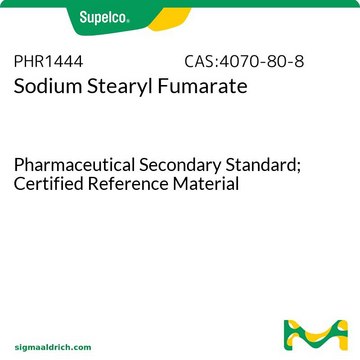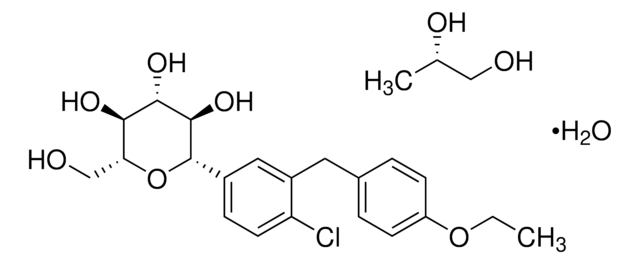1622000
USP
Stearyl alcohol
United States Pharmacopeia (USP) Reference Standard
Sinónimos:
1-Octadecanol, Octadecyl alcohol, Stearyl alcohol
About This Item
Productos recomendados
grade
pharmaceutical primary standard
vapor density
9.3 (vs air)
vapor pressure
<0.01 mmHg ( 38 °C)
API family
stearyl alcohol
autoignition temp.
842 °F
expl. lim.
~8 %
manufacturer/tradename
USP
mp
56-59 °C (lit.)
density
0.812 g/mL at 25 °C (lit.)
application(s)
pharmaceutical (small molecule)
format
neat
SMILES string
CCCCCCCCCCCCCCCCCCO
InChI
1S/C18H38O/c1-2-3-4-5-6-7-8-9-10-11-12-13-14-15-16-17-18-19/h19H,2-18H2,1H3
InChI key
GLDOVTGHNKAZLK-UHFFFAOYSA-N
¿Está buscando productos similares? Visita Guía de comparación de productos
General description
Application
- Cetostearyl Alcohol
- Sodium Stearyl Fumarate
- Hydrogenated Lanolin
- Cetyl Alcohol
- Myristyl Alcohol
- Oleyl Alcohol
Analysis Note
Other Notes
Related product
Storage Class
11 - Combustible Solids
wgk_germany
nwg
flash_point_f
383.0 °F - closed cup
flash_point_c
195 °C - closed cup
Elija entre una de las versiones más recientes:
Certificados de análisis (COA)
It looks like we've run into a problem, but you can still download Certificates of Analysis from our Documentos section.
Si necesita más asistencia, póngase en contacto con Atención al cliente
¿Ya tiene este producto?
Encuentre la documentación para los productos que ha comprado recientemente en la Biblioteca de documentos.
Los clientes también vieron
Nuestro equipo de científicos tiene experiencia en todas las áreas de investigación: Ciencias de la vida, Ciencia de los materiales, Síntesis química, Cromatografía, Analítica y muchas otras.
Póngase en contacto con el Servicio técnico









